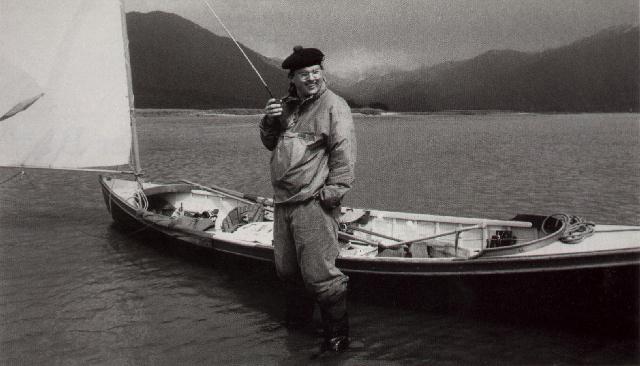
Peter, the "Old Salt," misjudges the tides and gets caught high and dry in the Gastineau Channel. (Nan Elliot)
|
Peter, the "Old Salt," misjudges the tides and gets caught high and dry in the Gastineau Channel. (Nan Elliot) |
| The
18-foot boat, a traditional Grand Banks dory design, was painted bright blue with red trim
and on the bow the name (and destination) in metallic gold letters read: "Glacier
Bay." The cockpit was jammed with 400 pounds of gear from compass and navigafional
charts to fishing line and junk food. Pulling about 25 miles a day, they weathered unpredictable and violent storms blowing off the North Pacific Ocean, navigated dangerous tidal currents, |
battled "quarter-pound mosquitoes," and rowed sometimes 18 hours a day. The last 50 miles into Glacier Bay took them a week, backs braced against 40- mile-an-hour head winds and heavy seas. The final 10 miles, just to test their grit, took eight hours with waves breaking over the bow. When they finally touched ground at the park headquarters in Glacier Bay, they bought a bottle of whiskey andsomewhere halfway through it, figured out that in two months they had rowed nearly 1,500 miles. | Reporters loved them. In every small town along the In-side Passage of British Columbia and Alaska, the rowers were instant celebrities. The curious lined up to watch, as one newspaperman observed, "getting vicarious thrills out of promising themselves they would do that some day, secure in the knowledge they never would." After all, the press jockey pointed out: |